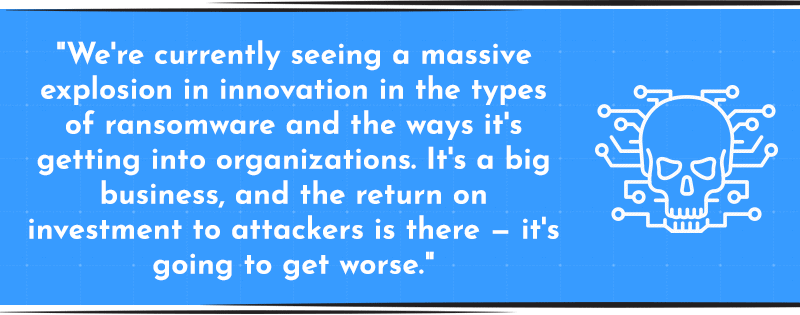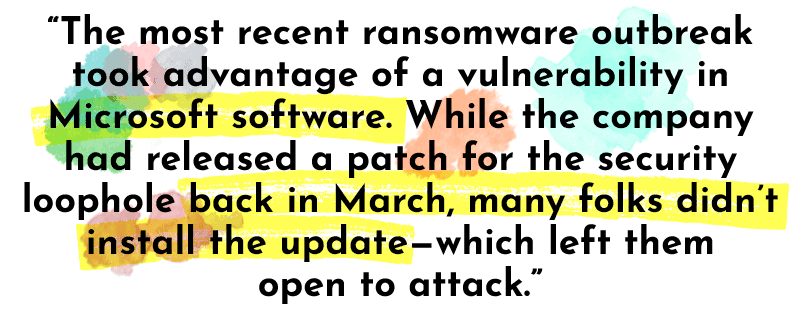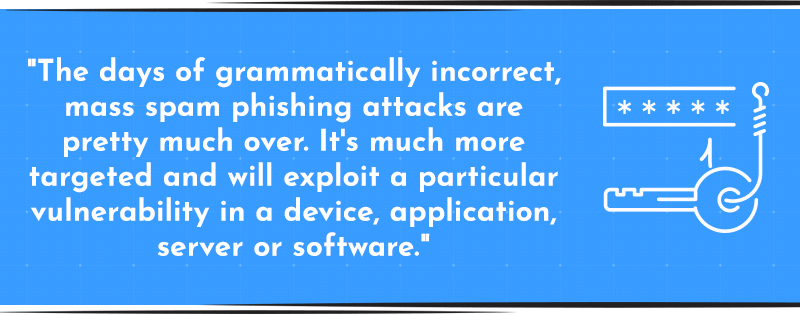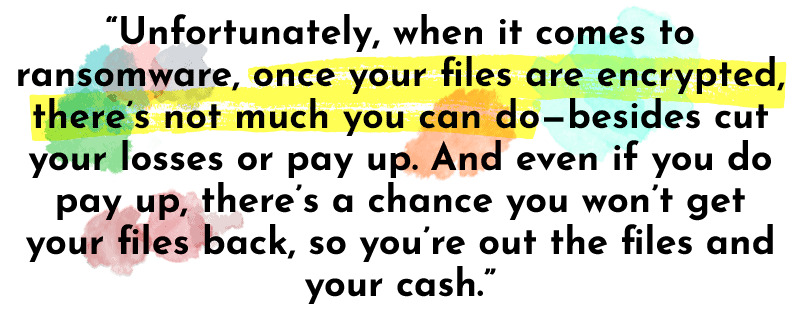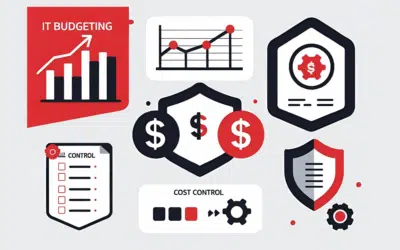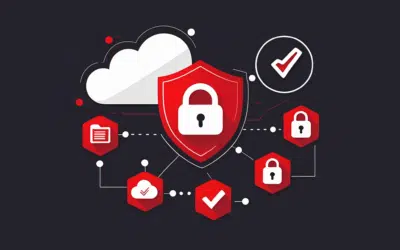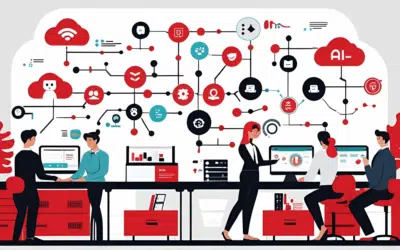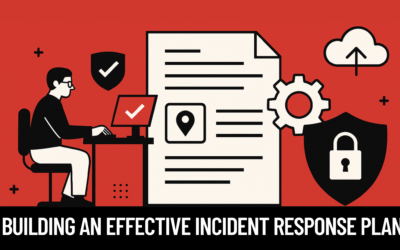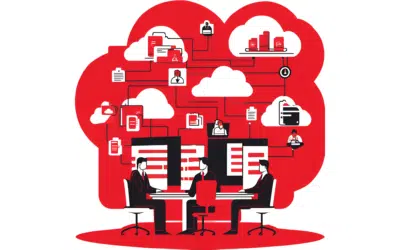[av_hr class=’invisible’ height=’20’ shadow=’no-shadow’ position=’center’ custom_border=’av-border-thin’ custom_width=’50px’ custom_border_color=” custom_margin_top=’30px’ custom_margin_bottom=’30px’ icon_select=’yes’ custom_icon_color=” icon=’ue808′ font=’entypo-fontello’ custom_class=” admin_preview_bg=” av_uid=’av-ju5qgu’]
Ransomware is a malicious type of software that’s rather active — and highly successful — in the digital world.
Find yourself face-to-face with a threat like ransomware and you’ll be in a data-less and frozen situation in no time at all. This is because ransomware kidnaps data and holds it hostage. Until you pay the ransom fee, you won’t be getting any of your data back (if at all).
But unlike the old days, this special brand of malicious emails and links is believable, targeted, and hard to avoid. Instead of far-off princes asking for a wire transfer, you’re subjected to emails that outline (in detail) your internal processes, employee names, and operating procedures.
So, the question becomes: How do you avoid ransomware?
And luckily for you, the answer to that question is relatively simple. Here’s a 3-part guide to help point you in the right direction.
Timely Updates
Ransomware leverages vulnerabilities (or holes) within your system to gain access to your data. Because of this, it’s incredibly important to patch up those holes before anything else discovers them.
Obviously, this is simple. Install updates when they’re available.
However, we also know how easy it is to postpone that update indefinitely.
But at the end of the day, that’s a bad habit you need to break. The sooner you can break it, the better off you’ll be.
Related: Knowledge is Power and Strength Against Cyber Security Threats
Increased Suspicion
Back in the day, spotting a malicious email was a walk in the park, a piece of cake, and a no-brainer. But these days, things have changed.
Instead of emails littered with grammatical mistakes and off-the-wall requests, we’re seeing highly targeted emails. Criminals are starting to really understand how their victims operate.
Related: Keep Your Data Safe in the Cloud with These 4 Tips
This being said, suspicion is a necessity. Never underestimate what a cybercriminal is capable of doing, and you must confirm the legitimacy of emails that ask you to click on an unknown link or download an attachment.
This might involve updating or tweaking internal policies, notifications or reporting. But no matter what, it always involves a hefty degree of suspicion.
Better Backups
If your files are snatched and encrypted by hackers, there’s no guarantee you’ll ever get that decryption key — even if you do pay the ransom fee.
In fact, many notable security vendors and managed security providers recommend not paying the ransom fee. But again, that has a lot to do with the type of data that was taken, how much the data loss impacts your operation, and what kind of backups you have.
At the end of the day, however, your best bet is always an in-depth backup and disaster recovery solution.
If your data is backed up regularly, then you don’t need to pay the ransom fee. And if you have a data backup solution that replicates your data every 15 or 30 minutes, the impact ransomware can have on your company will be minimal. That’s much better than paying up to a million dollars to get your data back.
If you have more questions about network security and ransomware, feel free to reach out to us. Or, take a look at the 4 components of network security you need in your business.

